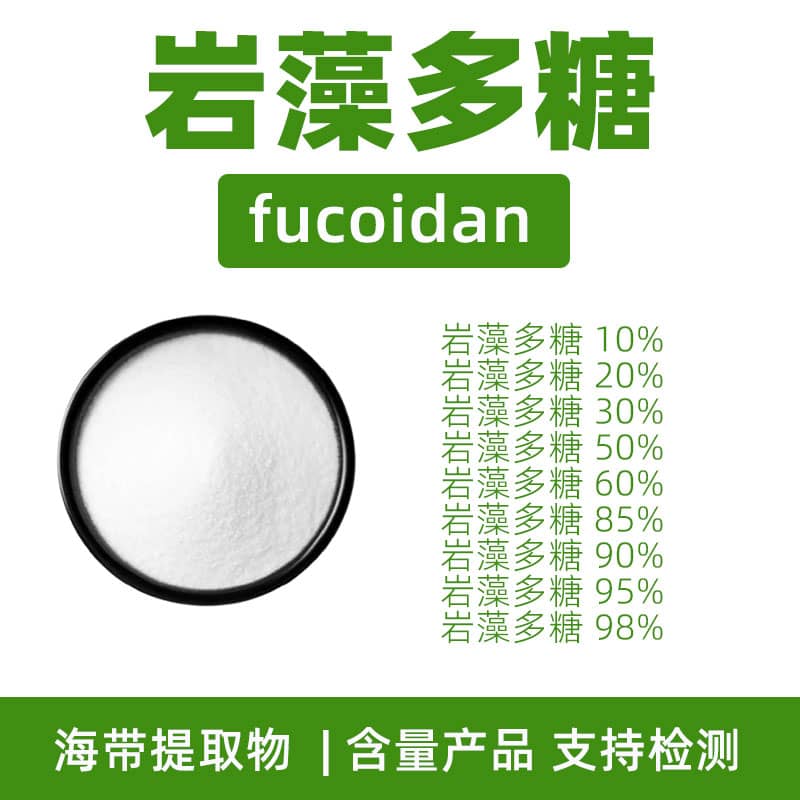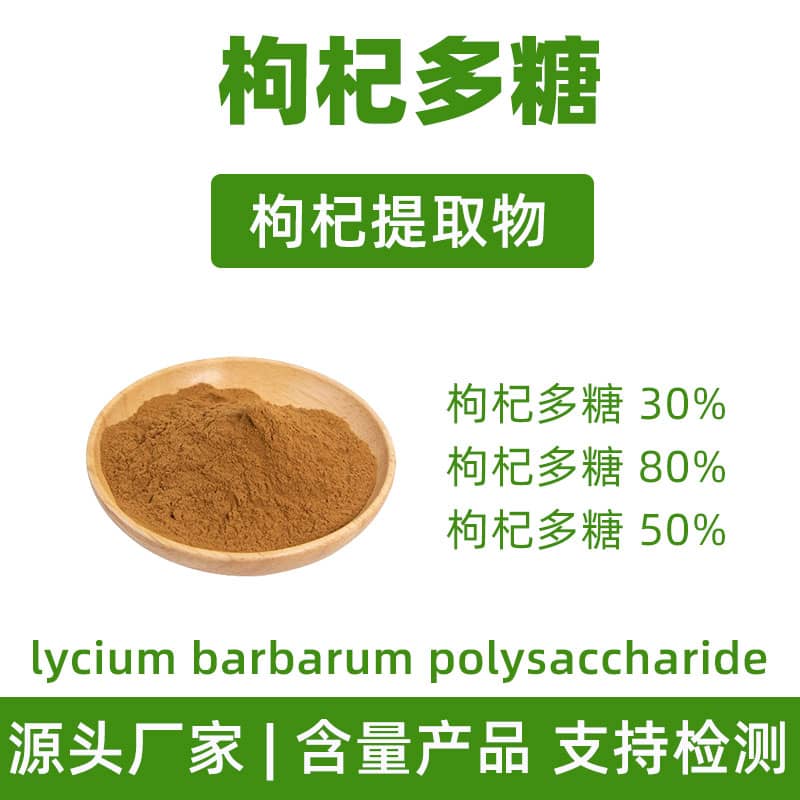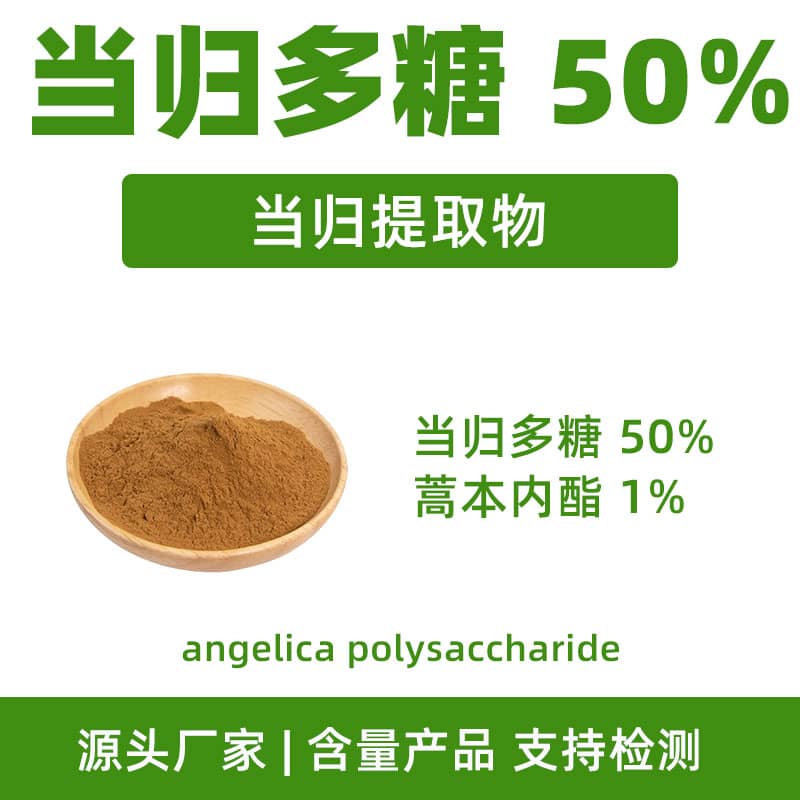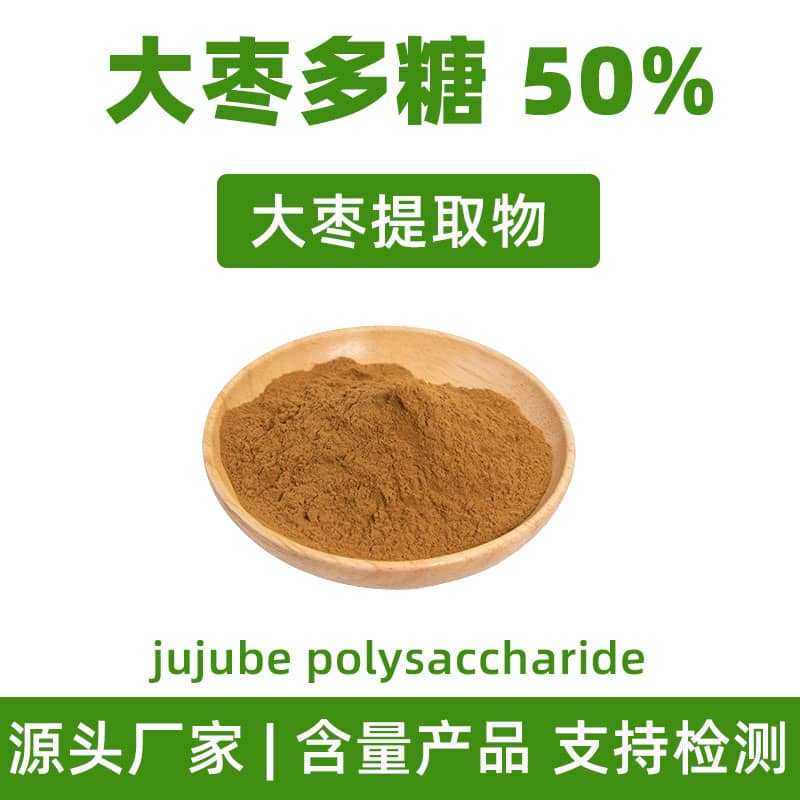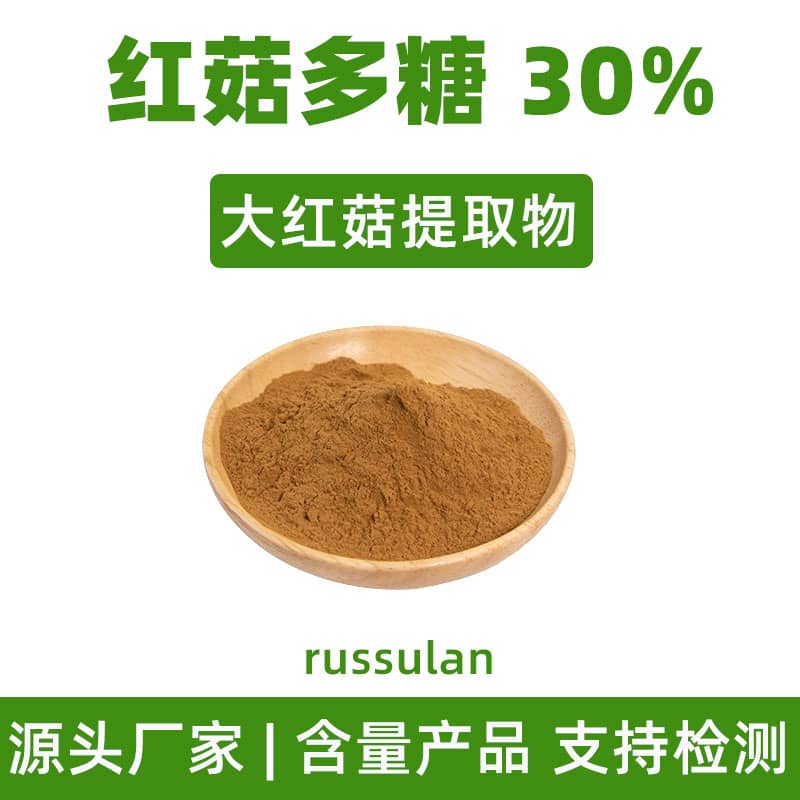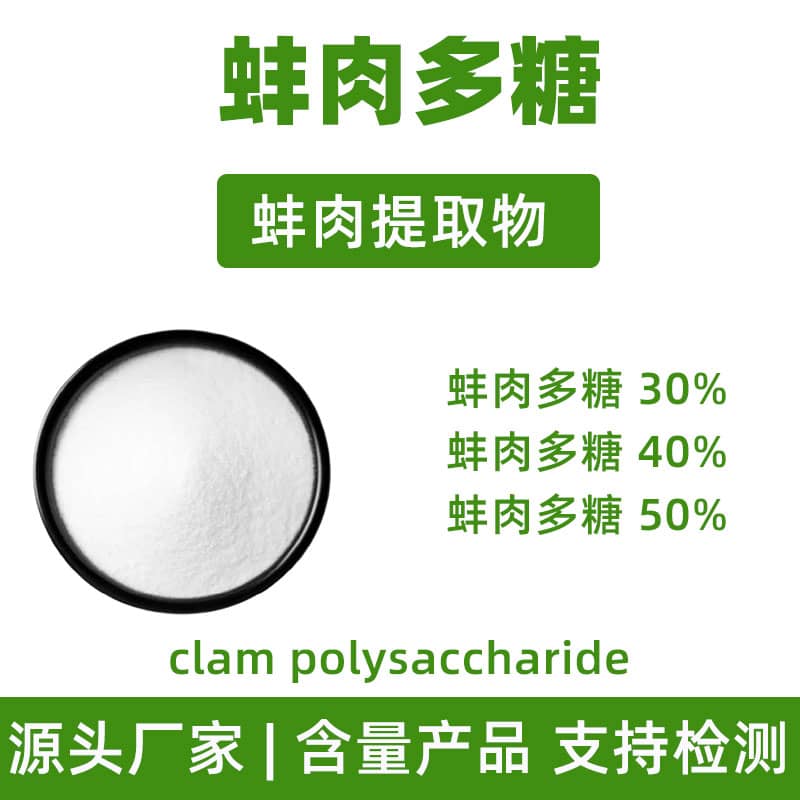Introduction to Ginseng Polysaccharide Products
Ginseng polysaccharides (50% or 70%) are primarily extracted from the roots of the Araliaceae family plant, ginseng. These polysaccharides are a class of bioactive natural polysaccharides, mainly consisting of ginsenosides and other polysaccharide substances. Their primary functions include supporting immune system function, enhancing physical strength and endurance, and helping to regulate internal balance. These characteristics make ginseng polysaccharides widely used in dietary supplements and functional foods.In ginseng extracts, 50% and 70% polysaccharide concentrations are common choices, with the 70% concentration being suitable for applications requiring higher levels of active ingredients. Ginseng polysaccharides are extensively used to boost resistance and immunity, and they are also found in health products aimed at combating fatigue and regulating blood sugar levels. Their applications extend to cosmetics, such as skincare products that improve skin health and hydration.In the food sector, ginseng polysaccharides can serve as functional additives to enhance the nutritional value and functionality of products. In cosmetics, their antioxidant properties make them effective ingredients for nourishing and repairing skin. The specific dosage and usage methods will vary depending on the application area but generally should follow the manufacturer's recommendations to ensure safety and efficacy.
Production Process for Ginseng Polysaccharide Products
The production process for ginseng polysaccharides (50% or 70%) involves several key steps:
- Raw Material Preparation: Select fresh, healthy ginseng roots as raw materials. Clean the roots thoroughly to remove dirt and impurities.
- Cutting and Drying: Cut the cleaned roots into small pieces to facilitate subsequent extraction. The sliced roots need to be dried, typically using air drying or low-temperature drying methods to prevent degradation of active components.
- Extraction: The dried sliced ginseng roots enter the extraction phase. Common methods include hot water extraction or enzymatic extraction. Hot water extraction is usually performed at high temperatures to dissolve polysaccharides from ginseng in water. Enzymatic extraction uses specific enzymes to break down cell walls, releasing more polysaccharides.
- Filtration and Concentration: The extract is filtered to remove solid impurities. The filtered liquid is then concentrated to increase the polysaccharide concentration using evaporators or membrane separation technologies.
- Precipitation and Separation: The concentrated liquid undergoes alcohol precipitation to precipitate out ginseng polysaccharides. The precipitate is separated from the solvent using centrifugation or filtration to obtain high-purity polysaccharides.
- Drying: The precipitated polysaccharides require drying. Common drying methods include spray drying and freeze-drying. Spray drying turns the polysaccharide solution into a mist for rapid drying into powder; freeze-drying removes moisture at low temperatures for stable dry powder.
- Crushing and Screening: The dried polysaccharide powder is crushed and screened to achieve the desired particle size, typically 80-100 mesh for suitability in various applications.
- Quality Testing: The final product undergoes rigorous quality testing, including active ingredient content analysis, heavy metal testing, and microbiological testing to ensure purity and safety.
- Packaging and Storage: The quality-tested polysaccharide powder is packaged in sealed containers and stored in a cool, dry environment to prevent moisture and light from affecting product quality.
This production process ensures that the effective components of ginseng polysaccharides are efficiently extracted while maintaining their bioactivity for use in various dietary supplements and functional foods.
Efficacy and Side Effects of Ginseng Polysaccharides
Ginseng polysaccharides (50% and 70%) are important active components extracted from ginseng roots. Due to their unique chemical structure and bioactivity, they are widely applied across various fields. Below are some major benefits along with potential side effects associated with ginseng polysaccharides.
Major Benefits
- Immune Modulation: Ginseng polysaccharides are believed to have immune-modulating properties that enhance the body's immune response by activating immune cells (such as macrophages, T cells, and B cells) and promoting the release of immune factors that help improve resistance against external pathogens.
- Antioxidant Effects: Ginseng polysaccharides exhibit significant antioxidant properties by scavenging free radicals within the body, reducing oxidative stress on cells which helps slow down aging processes while protecting cells from oxidative damage.
- Anti-Fatigue Effects: Research indicates that ginseng polysaccharides can enhance endurance while alleviating feelings of fatigue. This effect may be related to their ability to improve cellular metabolism and energy production.
- Anti-Inflammatory Properties: Ginseng polysaccharides help regulate internal inflammatory responses by inhibiting the production of inflammatory factors which can reduce the release of inflammatory mediators, thereby alleviating chronic inflammation conditions.
- Metabolic Support: They assist in regulating metabolic functions within the body including improving blood sugar levels and lipid metabolism through enhanced insulin sensitivity.
- Liver Protection: Ginseng polysaccharides provide certain protective effects on the liver by reducing liver damage while supporting liver function recovery through inhibition of oxidative stress and inflammatory responses within liver tissues.
- Cardiovascular Health Support: Studies suggest that ginseng polysaccharides may help lower blood pressure while improving lipid profiles thus supporting cardiovascular health through enhanced endothelial function and antioxidant effects.
Potential Side Effects
While ginseng polysaccharides are generally considered safe for most individuals, some side effects or adverse reactions may occur during use:
- Gastrointestinal Discomfort: Some individuals may experience gastrointestinal issues such as bloating, diarrhea, or indigestion when using ginseng polysaccharides due to varying sensitivities to its components.
- Allergic Reactions: Though rare, some individuals might have allergic reactions to ginseng polysaccharides manifesting as skin itching, rashes, or respiratory discomfort.
- Drug Interactions: Ginseng polysaccharides may interact with certain medications such as anticoagulants affecting their efficacy; therefore it is advisable to consult a healthcare professional if taking other medications concurrently.
- Long-term Use Effects: While short-term use typically poses no issues, caution should be exercised regarding dosage and frequency during long-term use to avoid potential side effects or interference with normal physiological functions.
In summary, as a natural health component, ginseng polysaccharides offer various health-promoting benefits; however dosage adjustments based on individual circumstances should be made while consulting professionals if any discomfort or concerns arise during use.
Applications Scenarios and Dosage of Ginseng Polysaccharides
Ginseng polysaccharides (50% and 70%) due to their unique bioactivity find extensive applications in medicine, food products, and cosmetics sectors. Below is a detailed introduction regarding their application scenarios along with usage methods and dosages.
Medical Applications
In medicine, ginseng polysaccharides primarily focus on enhancing immune function along with anti-fatigue and antioxidant effects:
- Immune Support: They play a role in regulating immune systems commonly used in preparing immune boosters found in dietary supplements aimed at enhancing resistance against environmental stressors or infections; recommended dosage typically ranges from 500-1000 mg/day adjusted according to product formulation or individual needs.
- Anti-Fatigue: Their anti-fatigue properties significantly aid in improving physical strength; often utilized by athletes or those under high-stress workloads; recommended dosage is also about 500-1000 mg/day depending on individual circumstances or product guidelines.
- Antioxidant: Ginseng polysaccharides' strong antioxidant capabilities contribute towards slowing down cellular aging processes; they are frequently added into antioxidant products such as functional beverages or dietary supplements with typical dosages ranging from 500-1000 mg/day based on actual needs.
Food Applications
In food applications, ginseng polysaccharides serve primarily for enhancing functionality along with nutritional value:
- Functional Beverages: They are commonly incorporated into functional drinks aimed at providing additional energy along with anti-fatigue effects; typical addition amounts range from 500-1000 mg per bottle depending on drink formulation or intended function.
- Nutritional Supplements: In nutritional supplements, they enhance health benefits; these products usually come in capsule/tablet/powder forms with recommended daily dosages around 500-1000 mg adjusted according to product instructions or personal requirements.
- Functional Foods: They can be added as functional ingredients into various foods like energy bars or healthy snacks enhancing nutritional value; typical addition amounts range from 500-1000 mg per serving adjusted based on product type along with intended functionality.
Cosmetic Applications
In cosmetics applications primarily focus on improving skin hydration along with antioxidant properties:
- Skincare Products: Ginseng polysaccharides are utilized for moisturizing alongside anti-aging properties found within creams/serums/masks aimed at enhancing skin moisture retention along with antioxidant capabilities; typical usage amounts range between 0.5%-2% based on total product weight adjusted according to formulation needs along with effectiveness observed during use.
- Anti-Aging Products: In anti-aging formulations they promote skin elasticity alongside firmness; typical addition amounts range between 0.5%-1% based on total product weight adjusted according to effectiveness observed during application processes.
- Masks & Serums: Frequently added into masks/serums aimed at improving skin repair alongside hydration effects; recommended amounts range between 0.5%-1% based on total product weight adjusted according to formulation requirements along with effectiveness observed during use processes.
Dosage Guidelines
- Medical Use: Daily intake of 500-1000 mg adjusted according personal health needs along with product guidelines.
- Food Use: Daily intake of 500-1000 mg adjusted based on product type alongside intended functionality.
- Cosmetic Use: Concentrations ranging between 0.5%-2% based on total product weight adjusted according formulation requirements alongside effectiveness observed during usage processes.
When using ginseng polysaccharide products, it is recommended to follow the product instructions and advice from professionals to ensure safety and effectiveness. In different application scenarios, the usage and dosage should be adjusted according to specific needs and product formulations.
Introduction, Distribution, and Growth Environment of Ginseng Source Plants
Ginseng (Panax ginseng C.A. Meyer) is a plant with significant medicinal value, mainly distributed in East Asia, including China, South Korea, and Japan. One of its main components is ginseng polysaccharide, which is a class of biologically active important chemical substances. The following is a detailed introduction to the source, distribution, and growth environment of ginseng.
Source Plant
Ginseng (Panax ginseng) is an important medicinal plant under the Araliaceae family. Its root is widely used in traditional Chinese medicine, mainly for improving immunity, enhancing physical strength, and improving overall health. Ginseng polysaccharide in ginseng extracts is obtained from its root, which has a wide range of biological activities.
Distribution
Natural Distribution: Ginseng is native to the Northeast Asia region, including Northeast China, the Korean Peninsula (now South Korea), and some areas of Japan. The main distribution areas in China include Jilin, Liaoning, and Heilongjiang provinces. Ginseng grows in the temperate forests of these regions, especially in the damp understory environments.
Cultivation Distribution: Due to the high medicinal value of ginseng, its cultivation range has expanded to many regions around the world, including some areas of the United States and Canada. These regions simulate the natural growth conditions of ginseng to ensure the cultivation of high-quality ginseng. South Korea and China are still the main producing countries, and their cultivation techniques and quality control experience are also widely recognized.
Growth Environment
Soil Requirements: Ginseng prefers soil rich in organic matter, usually neutral or slightly acidic soil. The soil needs good drainage to avoid root waterlogging and rot. Nutrients in the soil have an important impact on ginseng growth, especially basic elements such as nitrogen, phosphorus, and potassium.
Climate Conditions: Ginseng is suitable for growth in temperate climates, requiring temperatures between 0°C and 25°C. The cold of winter and the coolness of summer help the growth and quality of ginseng. Excessive temperatures and strong sunlight may adversely affect its growth, so shading measures are often adopted during cultivation to simulate the natural forest environment.
Growth Cycle: Ginseng has a long growth cycle, usually taking 4 to 6 years from planting to harvest. During this period, a large amount of nutrients accumulate in the ginseng root, forming active ingredients with medicinal value. The quality and age of the root directly affect its medicinal value, so special attention needs to be paid during harvesting.
Cultivation Methods: In artificial cultivation, ginseng is often planted in cool greenhouses or specially treated cultivation beds to mimic its natural growth environment. Regular fertilization and moisture management are required during the cultivation process to ensure soil fertility and suitable growth conditions.
Harvesting and Processing: Ginseng harvesting is generally carried out in autumn to ensure that the roots are fully mature. After harvesting, the ginseng roots need to go through cleaning, drying, and other processing steps to maintain their active ingredients and medicinal value. Different processing methods (such as drying or fermentation) will also affect the quality and function of ginseng.
In summary, the growth environment of ginseng is closely related to its medicinal value. Suitable soil conditions, climate, and growth cycle are crucial to the quality and accumulation of active ingredients of ginseng. The extraction and application of ginseng polysaccharides depend on these factors, so strict control of related conditions is required during cultivation and processing to ensure the quality and efficacy of the final product.
Ginseng Polysaccharide Processing and Storage
Processing and Storage
Processing:
The extraction of ginseng polysaccharides usually starts from dried ginseng roots. First, the roots are washed and cut to remove surface impurities and unwanted parts. Then, the cut roots are extracted with water, using high temperature and pressure of water to extract active ingredients. The extract is concentrated to remove excess water, ultimately obtaining a high-concentration ginseng polysaccharide liquid. This liquid usually goes through filtering and drying steps to transform into a powdered form. Drying can be done using methods such as spray drying or freeze-drying to ensure the stability and activity of the polysaccharides.
Storage:
Ginseng polysaccharide powder should be stored in a dry, cool, and light-avoiding environment to prevent moisture and light from negatively impacting its quality. The optimal storage temperature is 15°C to 25°C, with humidity below 60%. Using sealed containers (such as aluminum foil bags or plastic bottles) for packaging can effectively isolate air and moisture, extending the shelf life. Avoid contact with strong acids, strong bases, or oxidants to prevent affecting the stability and effectiveness of the polysaccharides. Opened products should be used as soon as possible to ensure their best effect and quality.
Monica Sun is a seasoned expert in the plant extraction industry with over a decade of experience in research and production. She specializes in the extraction and purification of plant active ingredients, focusing on driving innovation in natural product applications. Monica has participated in the development of multiple functional plant extracts, delivering high-value natural raw material solutions for the health food, pharmaceutical, and dietary supplement sectors.









